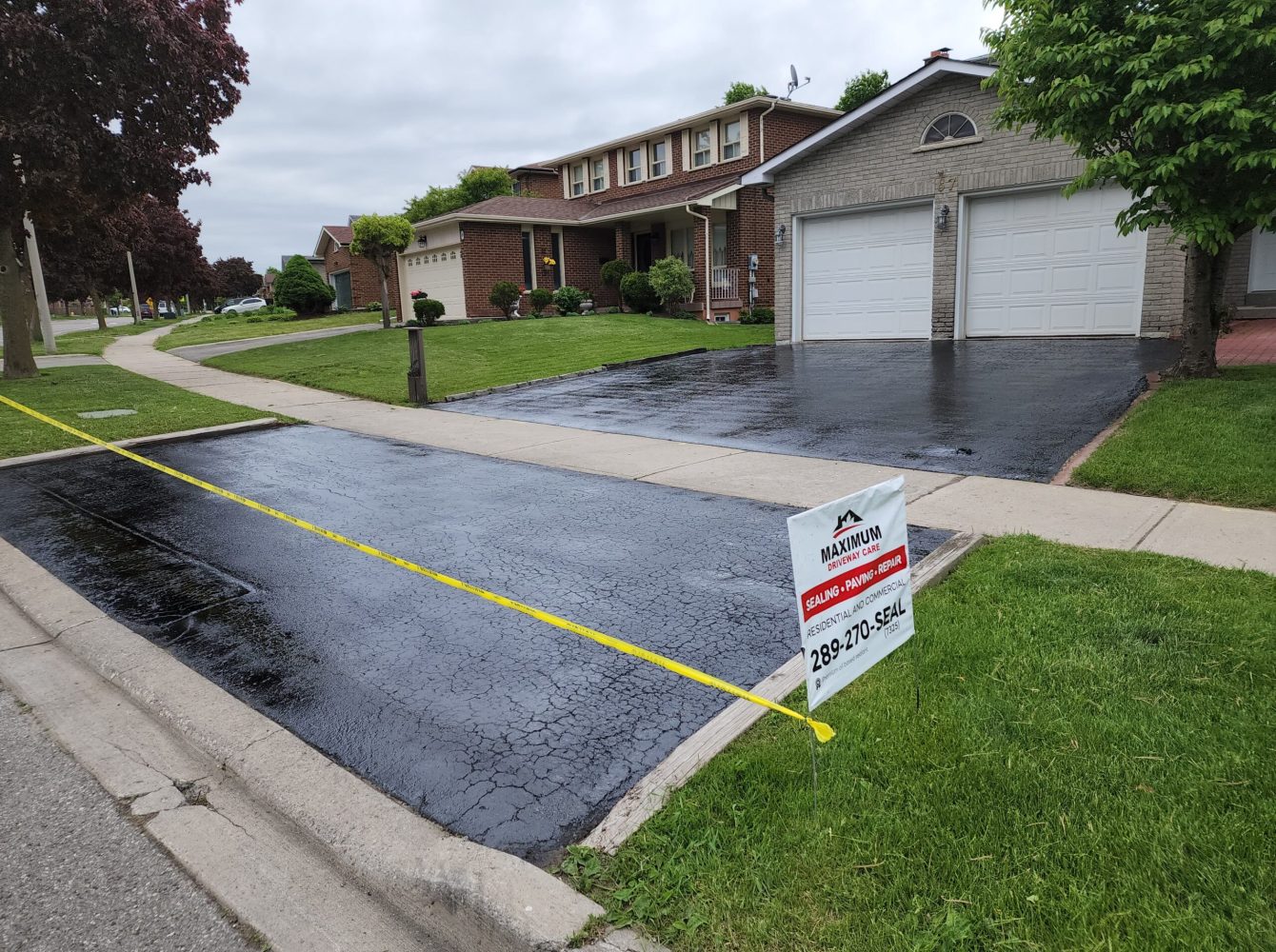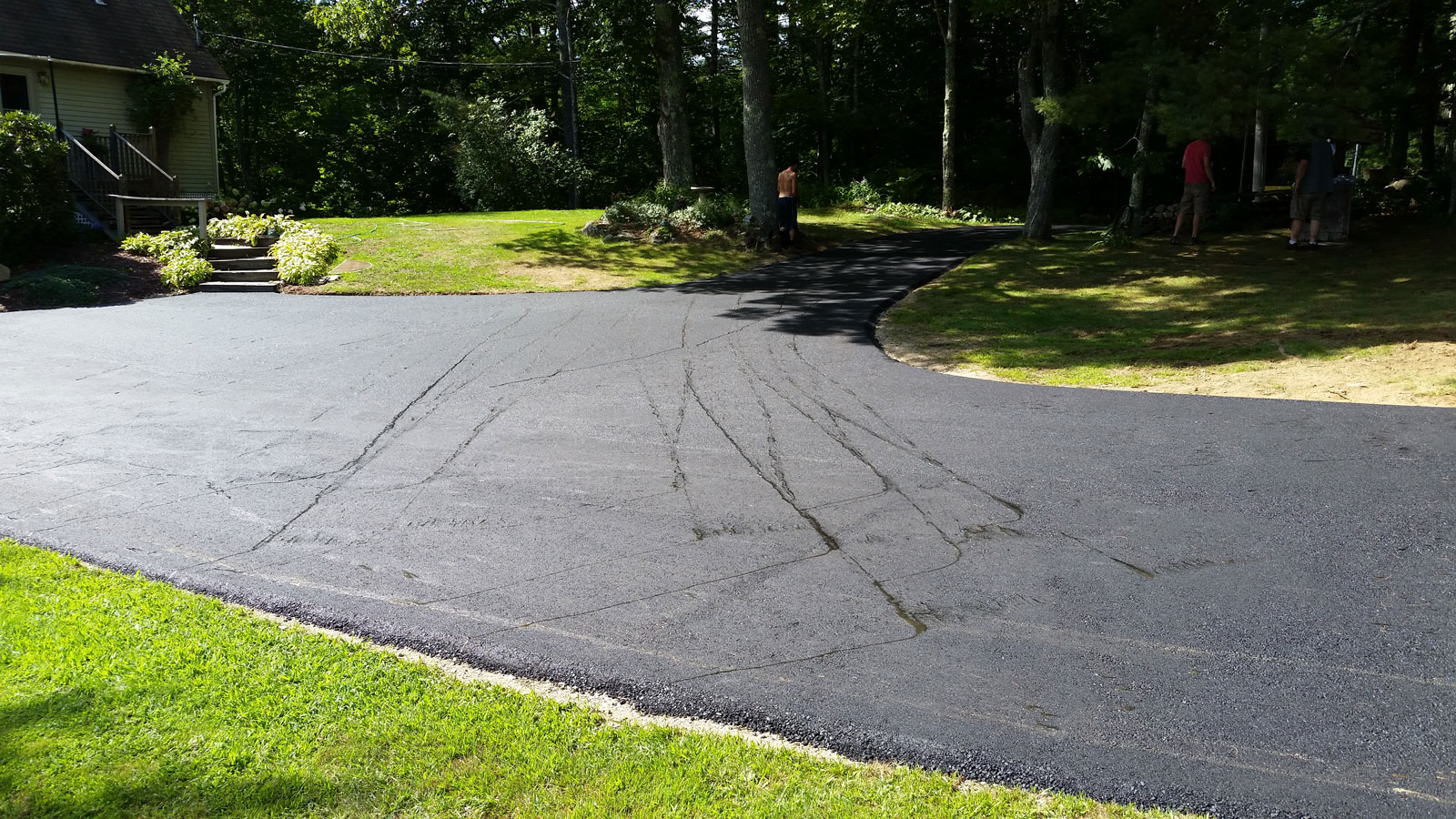Revitalize Your Residential Or Commercial Property with Regrading and Asphalt Sealing Methods
Revitalize Your Residential Or Commercial Property with Regrading and Asphalt Sealing Methods
Blog Article
Hot Mix Asphalt: A Lasting Option for Sidewalk
Hot Mix Asphalt (HMA) has actually arised as a leading sustainable choice for pavement services, using a myriad of environmental advantages and ingenious innovations. As the demand for environmentally friendly building practices grows, discovering the nuances of HMA's sustainability can give important insights right into the future of sidewalk solutions.
Ecological Advantages of Hot Mix Asphalt

Furthermore, Hot Mix Asphalt helps to alleviate city warm island effects. Its dark color takes in sunshine, minimizing the amount of warm reflected back right into the atmosphere contrasted to lighter-colored pavements. This can decrease ambient temperature levels in urban locations, decreasing the demand for a/c and eventually reducing energy intake.
Additionally, Hot Mix Asphalt contributes to boosted stormwater administration. Its porous nature permits water to penetrate the pavement and reenergize groundwater materials, lowering drainage and the danger of flooding. These environmental benefits make Warm Mix Asphalt a sustainable option for leading highways and roadways.
Energy Performance in HMA Production
Is power efficiency an important consider the production of Hot Mix Asphalt (HMA)? Definitely. Power plays a substantial duty in the manufacturing of HMA, affecting both expense and ecological sustainability. One key aspect of energy performance in HMA production is using warm mix asphalt (WMA) modern technologies (angled parking). WMA permits the mixing and positioning of asphalt at lower temperatures contrasted to standard warm mix asphalt, leading to minimized energy consumption during manufacturing. This process not just decreases gas usage however additionally lowers greenhouse gas emissions, making it a more ecologically friendly option.
In addition, innovations in plant modern technologies have caused even more energy-efficient HMA production procedures. Modern plants are designed with attributes like recycled asphalt sidewalk (RAP) handling capabilities, efficient heater systems, and enhanced insulation, all adding to power savings. By enhancing power use in HMA production, the industry can decrease its carbon footprint while keeping high-quality sidewalk materials. Energy efficiency is, consequently, a critical factor to consider in guaranteeing the sustainability of Hot Mix Asphalt manufacturing.
Recyclability of Warm Mix Asphalt
The recyclability of Hot Mix Asphalt (HMA) is an essential aspect of its sustainability and long-lasting environmental impact. HMA is one of the most recycled products in the USA, with over 100 million heaps of recovered asphalt pavement (RAP) being reused yearly in new sidewalk construction. Reusing HMA supplies a number of ecological advantages, such as reducing the requirement for virgin products, reducing power consumption during manufacturing, and reducing the quantity of waste sent out to garbage dumps.
The process of reusing HMA includes crushing the existing sidewalk, crushing it right into smaller pieces, and blending it with new accumulation and asphalt binder to produce a recycled mix. On the whole, the recyclability of HMA plays a considerable duty in promoting lasting practices within the sidewalk industry.

Long-Term Efficiency of HMA
Asphalt pavements demonstrate toughness and strength over a prolonged period, showing the long-term performance of Warm Mix Asphalt (HMA) The durability of HMA can be credited to its click here for more info capability to hold up against heavy traffic lots, harsh weather problems, and the impacts of aging. Research studies have actually revealed that useful reference well-designed and correctly built HMA pavements can last for 20 years or more with regular upkeep. The key to maximizing the long-term performance of HMA hinges on making use of premium materials, adhering to best methods in building and construction, and carrying out reliable upkeep methods. Correct drain, routine assessments, and timely fixings are essential for preserving the architectural stability of HMA pavements over time. Furthermore, advancements in HMA innovation, such as using polymer-modified binders and cozy mix asphalt, have even more boosted the resilience and long life of HMA sidewalks. By focusing on high quality building and maintenance methods, HMA proceeds to verify itself as a cost-efficient and sustainable option for lasting pavement framework.

HMA: Longevity and Sustainability
Demonstrating both durability and sustainability, Hot Mix Asphalt (HMA) has actually come to be a cornerstone in the building of lasting pavement facilities - regrading. HMA's durability comes from its capacity to endure hefty tons, severe climate condition, and high traffic quantities, making it a trustworthy option for roads, highways, and flight terminal runways. The make-up of HMA, which typically consists of accumulations, binder, and filler, plays a crucial role in enhancing its durability and resistance to damage
In addition, HMA's sustainability lies in its recyclability and energy-efficient production process. The capacity to recycle reclaimed asphalt pavement (RAP) in new HMA mixtures lowers the demand for virgin materials and minimizes the ecological influence of pavement building and upkeep. Furthermore, the energy efficiency of generating HMA depends on its lower blending temperature levels contrasted to other pavement materials, causing minimized energy intake and greenhouse gas discharges.
Conclusion
In conclusion, warm mix asphalt (HMA) uses a sustainable service for pavement with its eco-friendly attributes. HMA's recyclability, energy effectiveness in production, and long-term durability make it a green choice for roadway building. By conserving natural resources, decreasing waste, and reducing greenhouse gas discharges, HMA plays an important function in advertising go sustainability in framework growth. Its capacity to alleviate metropolitan warmth island impacts better highlights its relevance in creating resistant and ecologically mindful sidewalk systems.
HMA is one of the most recycled products in the United States, with over 100 million heaps of redeemed asphalt pavement (RAP) being reused annually in new pavement construction.The process of reusing HMA involves crushing the existing sidewalk, squashing it into smaller sized items, and blending it with new aggregate and asphalt binder to create a recycled mix.Asphalt sidewalks show resilience and strength over an extended duration, mirroring the long-term performance of Hot Mix Asphalt (HMA) Additionally, developments in HMA innovation, such as the use of polymer-modified binders and warm mix asphalt, have actually additionally improved the sturdiness and long life of HMA pavements. The ability to reuse redeemed asphalt pavement (RAP) in new HMA mixes reduces the demand for virgin products and minimizes the environmental impact of pavement building and upkeep.
Report this page